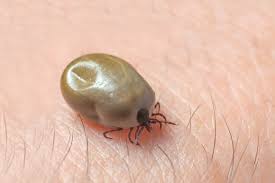Lyme Disease is the most common vector-borne illness in the United States. It was first identified in 1975 and named after the town in which it was discovered.
Lyme Disease is caused by an infection with the spirochete Borrelia burgdorferi and other similar shaped microorganisms (bacteria). It is transmitted to humans by tick bites (specifically Ixodes Ticks). The consequent infection and the body’s immune response to the infection are what causes the signs and symptoms seen in Lyme Disease.
Lyme disease is a multisystemic illness which means it affects multiple systems in the body, including the skin, bones and the brain. It is mostly found in the United States of America but has been seen in Europe, Asia, Australia and Africa. About 300,000 people are affected yearly.
What Are The Signs And Symptoms Of Lyme Disease?
After the bites of these ticks, the disease-causing microorganism Borrelia burgdorferi enters the blood and travels in it throughout the body. The disease often progresses in three stages, each one with different symptoms and severity.
• Stage 1: the mildest stage. It causes a rash in the pattern of a bull’s eye (Erythema migrans). This rash appears a few days to a month after the tick bite and is accompanied by headaches, lymph node swelling, neck stiffness, shortness of breath, fever, malaise, chills, loss of appetite, generalized fatigue, loss of energy, and muscle or joint ache. This is the most common stage seen in clinical practice.
• Stage 2: This stage only occurs in a small number of people. It is seen about 2 weeks to 3 months after the infection. The commonest symptom seen here is joint pain that moves from one joint to the other. Additionally, there may be memory disturbances, heart disease, visual disturbances, inability to move one part of the face (Bell’s Palsy) and chest pain.
• Stage 3: This begins nearly 2 years after the tick bite. There are usually severe symptoms at this stage which may include paralysis, inflammation of the covering of the brain (meningitis), memory loss, mood swings
How is Lyme Disease diagnosed?
If Lyme disease is suspected, two specific blood tests may be carried out amongst other investigations based on the symptoms. There are:
• Step 1: Enzyme immunoassay or immunofluorescence assay
• Step 2: Western blot testing
The second test is only carried out if the first is positive or if symptoms persist beyond a month. It may be difficult to diagnose Lyme Disease because of the similarities of the symptoms to other diseases.
How is Lyme Disease treated?
After due consultation, physical examination and investigations, a treatment plan is made for Lyme disease. Treatment is offered via appropriate antibiotics which may be given for 14 or 28 days based on the severity of symptoms. Pain medications may also be offered to alleviate pains and fever.
Patients with early disease usually recover fast after the start of antibiotics while those in late disease can expect a slower recovery.
Other procedures may be carried out based on the severity of illness and complications seen.
Preventing tick bites is the best way to prevent Lyme Disease. Tick bites are not painful and will take careful checking of the skin. If bitten, remove the tick immediately.
If you have any symptoms, please visit the nearest clinic. The diagnosis is made easier if the tick bite is mentioned to the doctor. You should also avoid areas with high grass. Your pets may also get bitten so ensure to examine them after a day out in the woods.
Source: Guardian Newspaper




